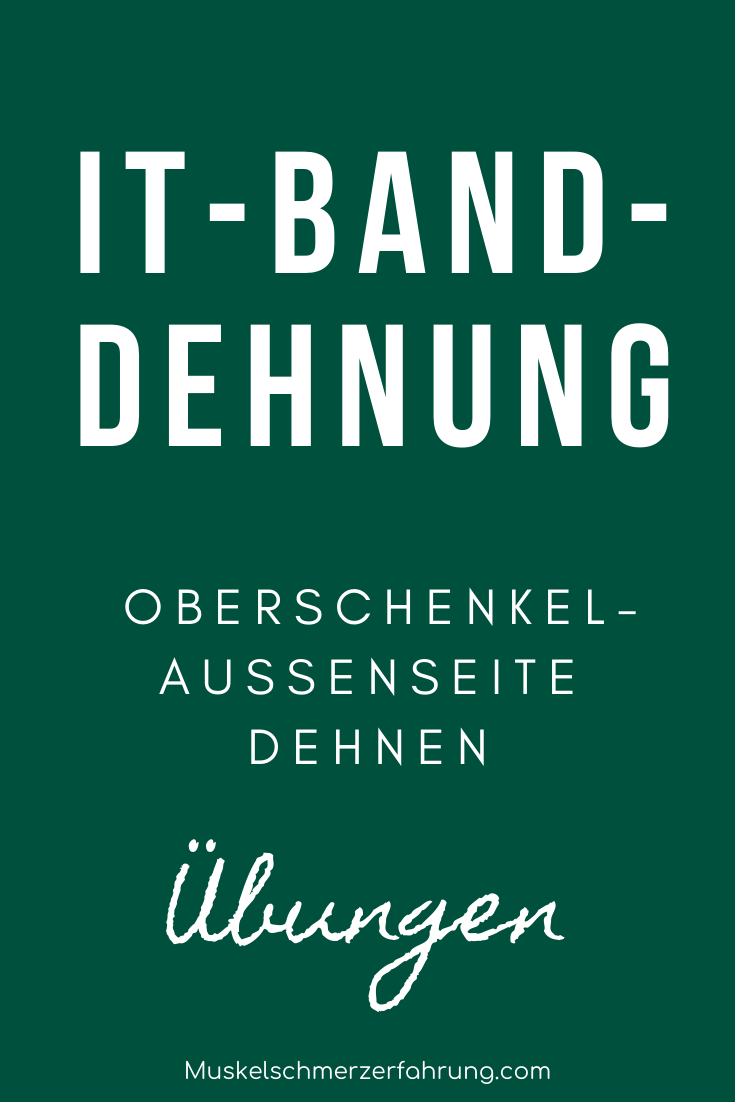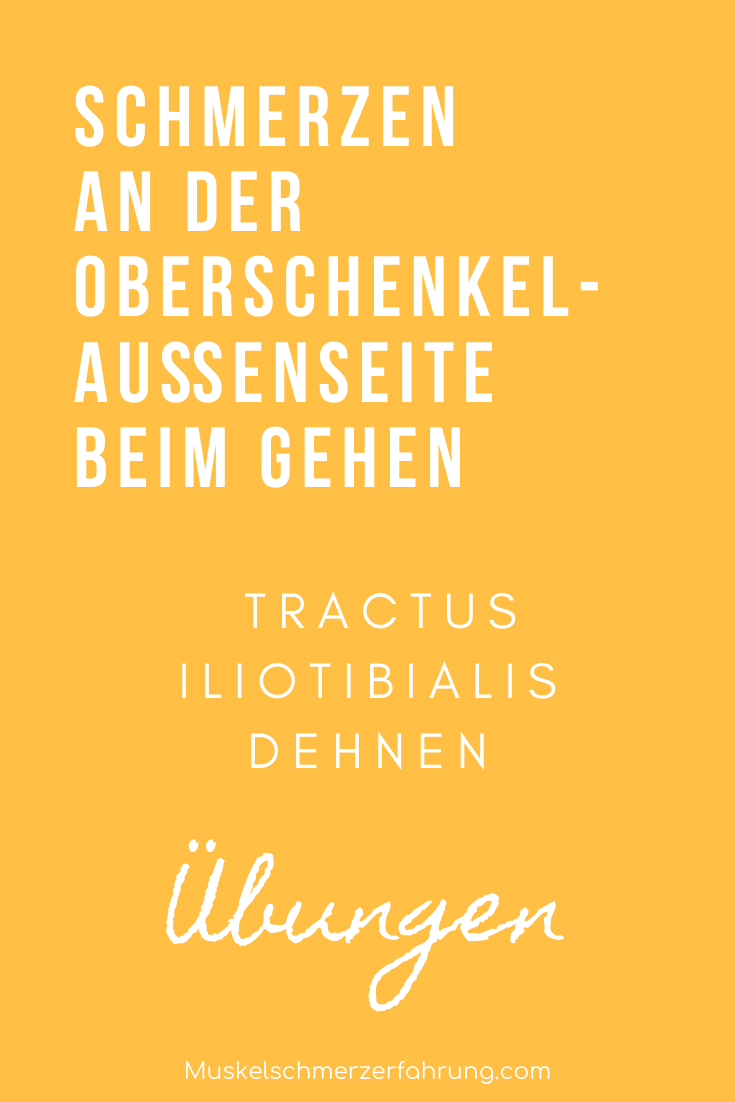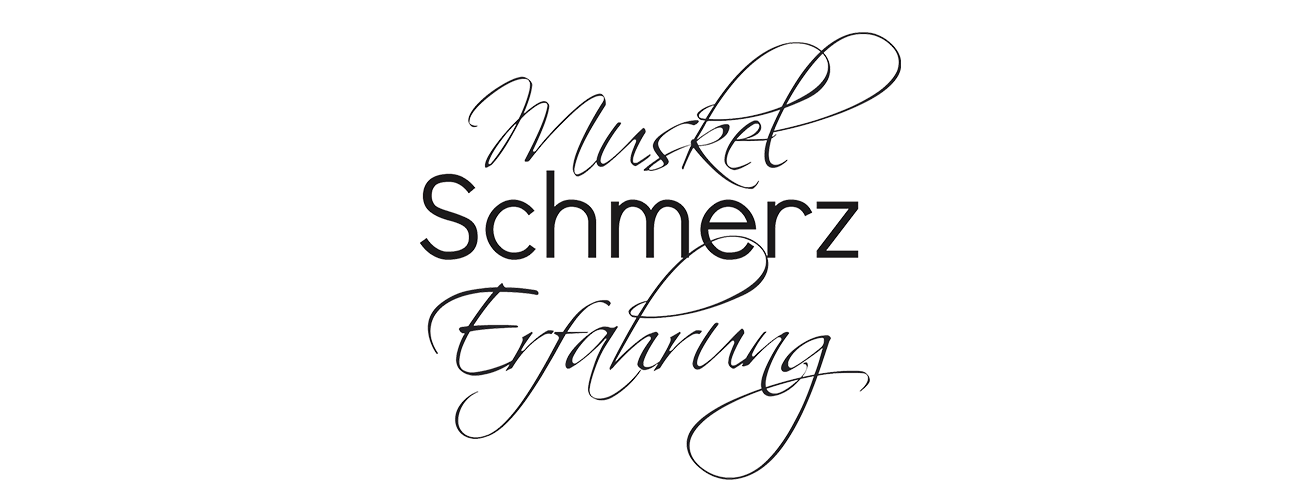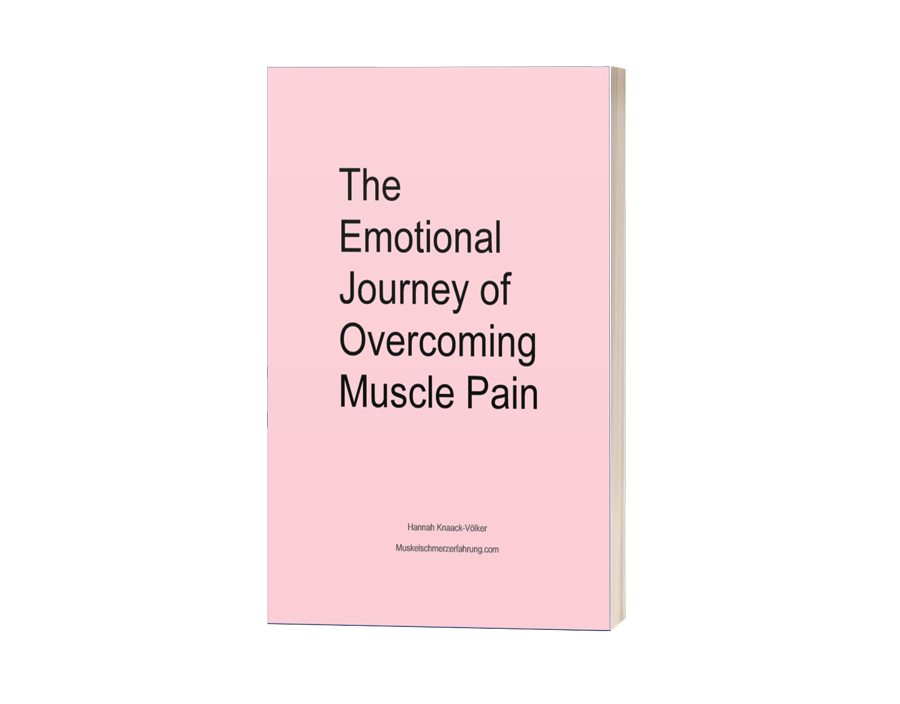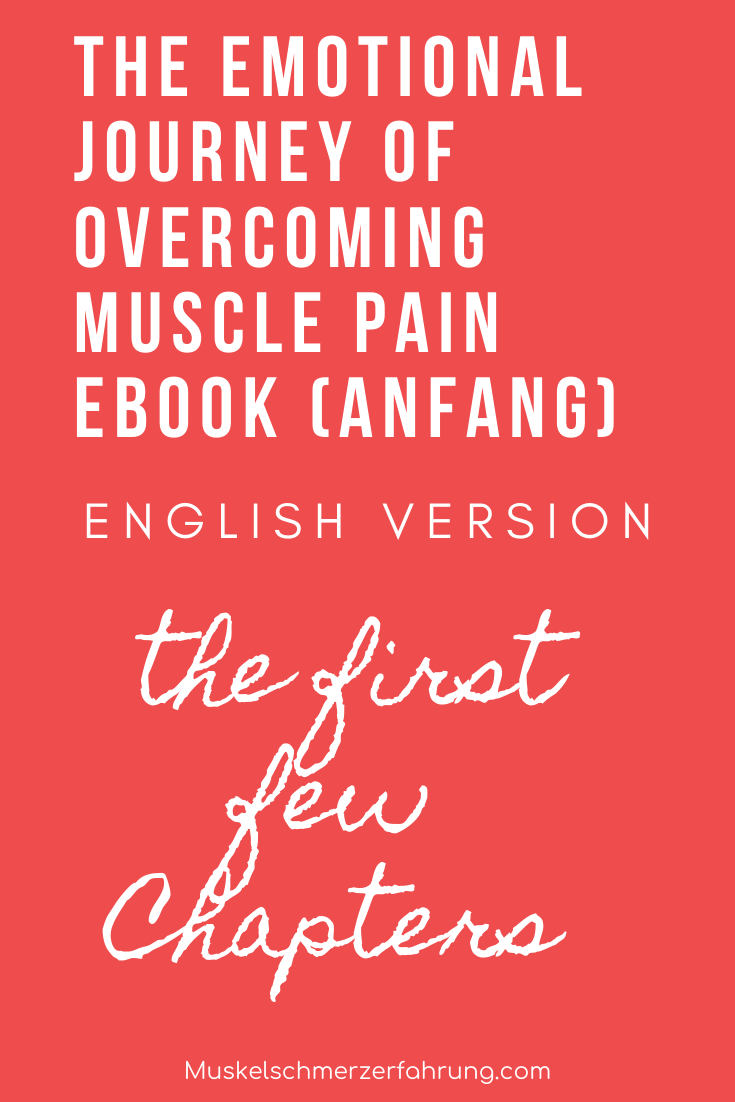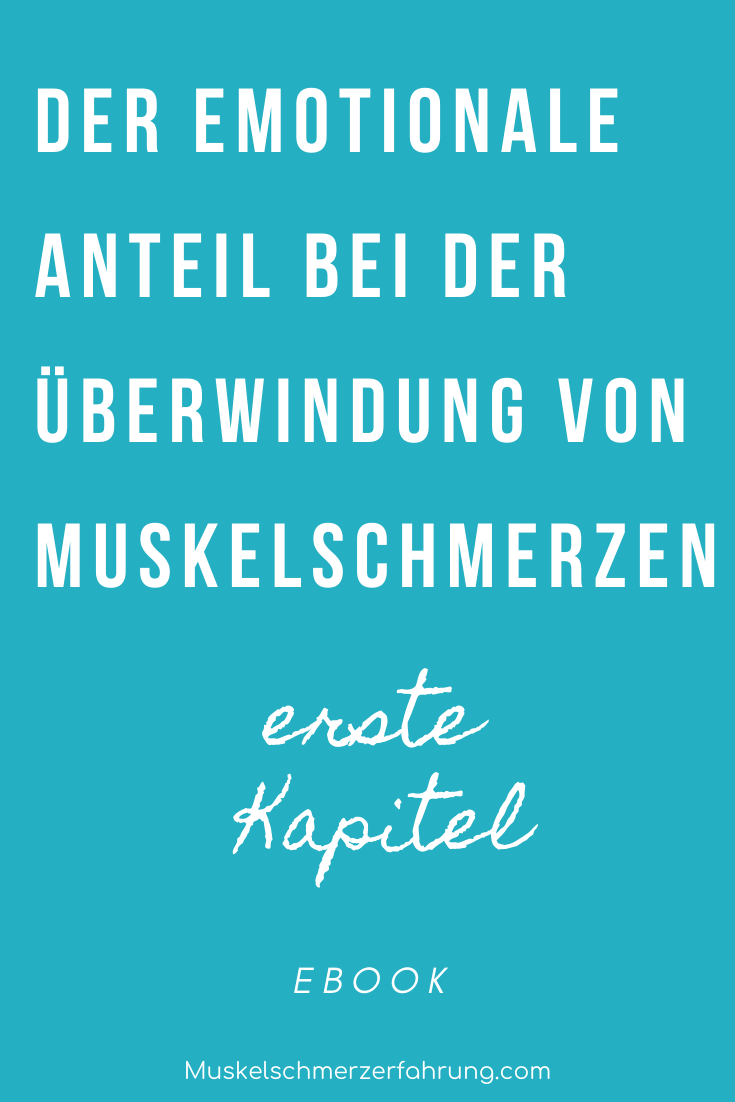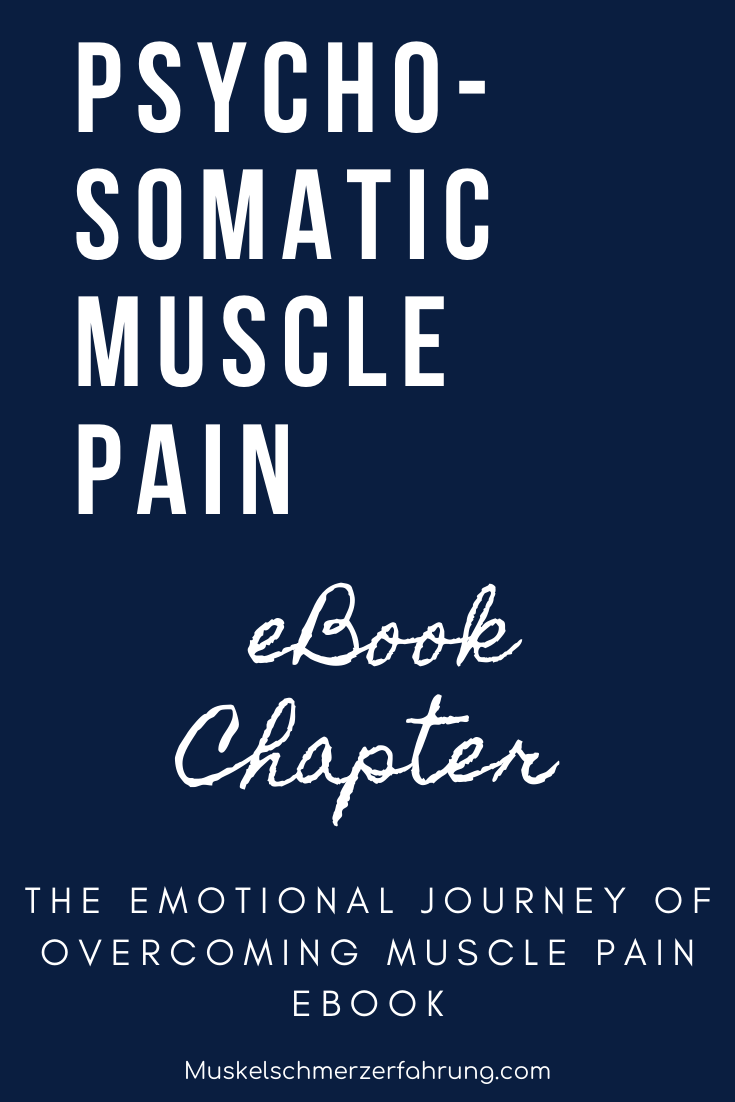
Psychosomatic Muscle Pain
Deine Schmerzen lassen dir keine Ruhe und du bist traurig? Du bist nicht alleine. Manchmal hat man keine Antwort, keine Hoffnung, keine Kraft. Ich weiß, wie sich das anfühlt. Ich habe meinen Weg raus aus dem emotionalen Loch, ausgelöst durch Schmerzen, in ein EBook verfasst. Das Buch ist keine praktische Hilfe, wie eine Dehnübung, sondern eine geistige und emotionale Stütze. The Emotional Journey of Overcoming Muscle Pain kostet 12€ und du kannst es als pdf über Digistore24 kaufen.
This post consists of a chapter from my eBook The Emotional Journey of Overcoming Muscle Pain. For more information, please click here.
Thanks for reading, and enjoy!
What You Can Do About Psychosomatic Muscle Pain
Here is a short overview of the things that you can do to better learn to live with the emotional forcing of pain expressions. Once you accept the existence of an emotional factor in some physical pain formation, in particular, muscular tension-based pains, you hold in your hands a great control centre for pain expression.
To me now, physical tension release through treatments, movement exercises, and muscle lengthening are one side of the coin. But when I notice that these regulating screws don’t show a lasting effect and that the tension and pain return time and time again without a physical trigger or plausible cause, I move on to search for emotional causes.
An unresolved emotional stress like fear and serious discomfort can be the underlying cause for tension which brings the symptom back again and again, even after a mechanical tension reduction in the form of body treatment or exercises.
What you can do splits into four parts: first you can find pain-related emotions, then you may make out the thoughts connected to those emotions, third you learn how to treat somatic emotions and then you can begin to reframe or evolve emotiosomatic thoughts into less destructive alternatives.
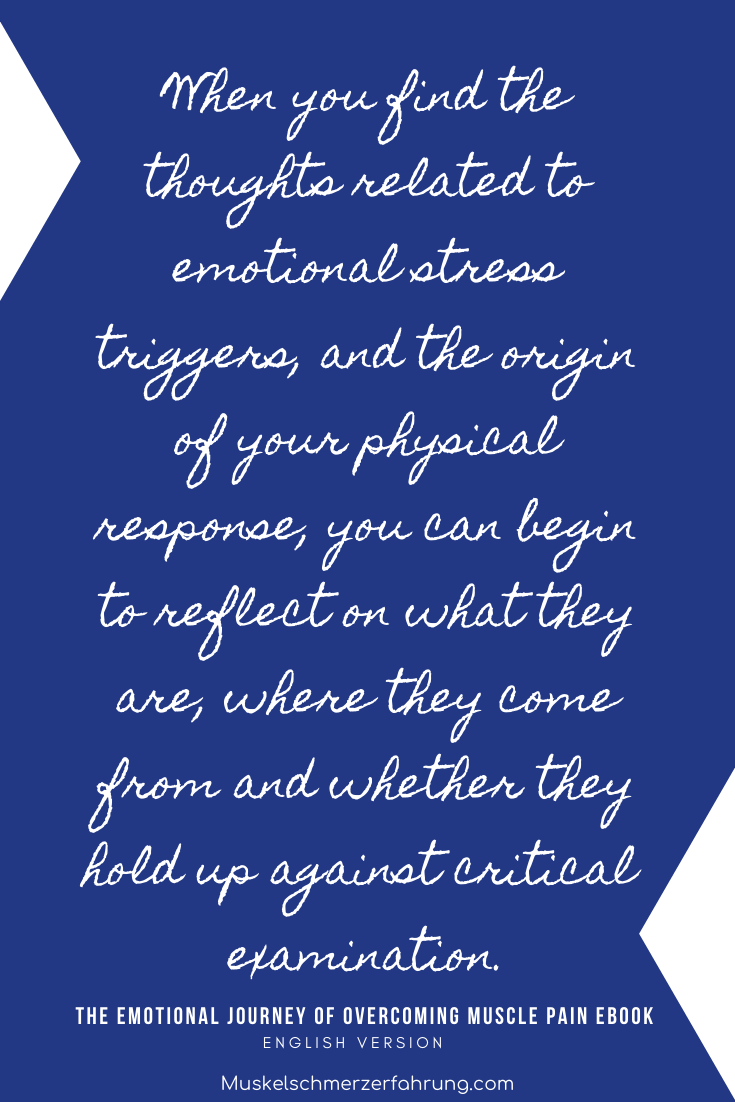
Finding pain-related emotions
Pain-related emotions are those emotions that occur in synchronicity with a known pain or slightly before it sets in. They are strong uncomfortable emotions yet ones that we may have grown accustomed to or are used to override for their lack of social acceptance and pleasantness.
Have an eye out in particular for feelings of discomfort that are familiar and ordinary, something part of your life in disharmony to your true self and the natural expression of your soul.
Which thoughts are related to emotiosomatic triggers?
The thoughts that stand behind what we believe about us and the world around us to be true are the screw you can adjust to change your emotional responses, even though sometimes we may be under the impression we are subjected to our feelings without reigns in our hands and the experience of our emotions seems way out of our control.
When you find the thoughts related to emotional stress triggers and the origin of your physical response you can begin to reflect on what they are, where they come from and whether they hold up against critical examination.
Dealing with somatic emotions
This section shall be about how to treat those emotions which have power over your pain experience. They can either initiate pain or allow you to process it in a way that will help you reduce the pain extent and frequency of pain initiation until you eventually surpass a specific pain altogether, grow friends with it or just know what to do with it really well.
Reframing emotiosomatic thoughts
This part is dedicated to explaining that you are able to gradually transform your own thoughts and the meaning attached to them. But there is no need to change your thoughts if you don’t want to. You can simply re-evaluate your view on thoughts that trigger a painful physical reaction and let the view become one of compassion, not of destruction.
How to know which Emotions have a Pain Relationship?
Now that I have presented you with my view that emotions can have a direct connection to physical responses [see also previous chapter] like the expression of pain, you may ask yourself which emotions exactly are responsible for your torments. How can you identify the emotions that stand in relation to a pain experience?
In my view, out of the countless thoughts the mind thinks only a handful can be considered critical for triggering unpleasant body responses. These thoughts correlate to what we believe about the world and ourselves. Otherwise, a thought is not personal and not relevant to your existence and hence has no power over your emotional landscape. It then cannot develop a control over the body.
In order for you to better understand what I’m talking about, here are three examples of pinpointing emotions connected to physical pain in my life.
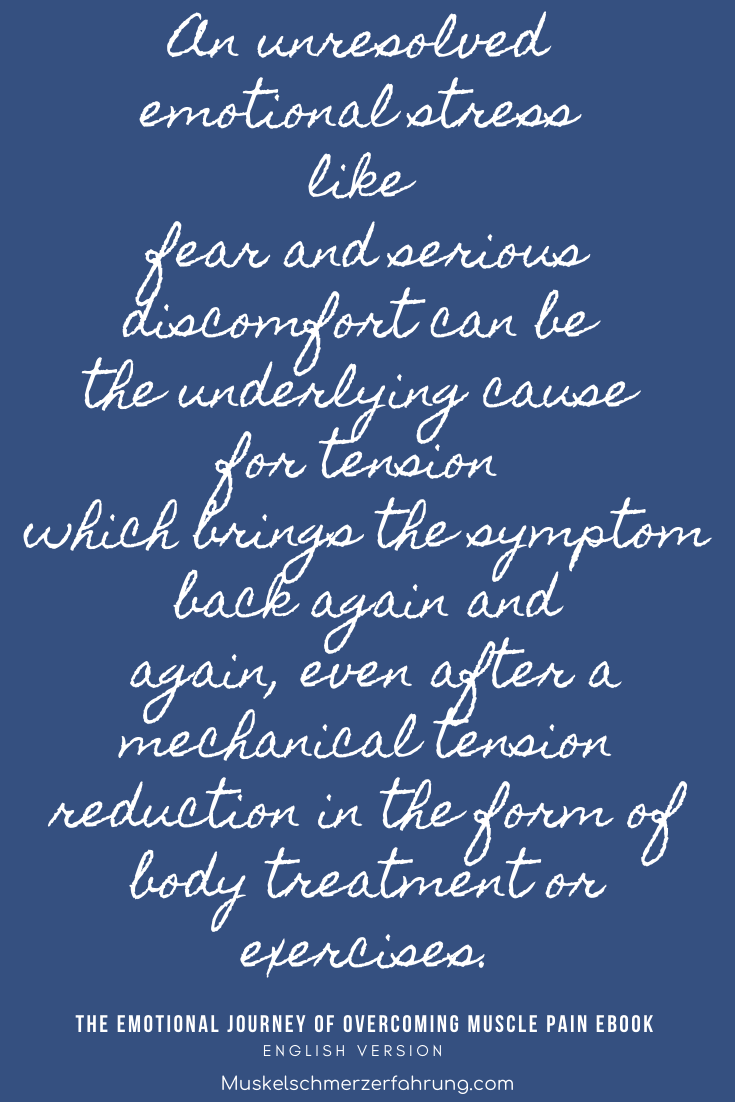
Example 1: Environment
The first time I consciously acknowledged a non-physical cause for increased pain occurrence was almost a year after the tinnitus appeared and had to do with the atmosphere of my workplace, a scientific Raman Spectroscopy lab.
I had back pain in both my Quadratus lumborum muscles and felt every movement my hip and lower back made. Every bend hurt. I had had treatment from my pain therapist the day before and the pain had temporarily gotten better but the next day at work as soon as I entered the lab the pain was back; the muscles tensed, falling back in the all too familiar pattern, now their most natural configuration.
The muscle memory snapped right back into the old tension state as soon as stress from the outside world entered my system through my senses. There was no explanation for the pain to stay and intrusively reappear without comprehensible physical trigger. The only constant in relation to the back-pain appearance was the environment in which it flared up. It would stay on when I left the lab but refuelled every time, I went back to the Raman lab.
The environment was one where I didn’t feel complete or myself in. The whole place, the building, the essence of how people interacted with each other and the lab, in particular, made me tense and on-edge. To me now the whole place represents discomfort and effort to keep myself together.
Back then I had carefully thought out doing my bachelor’s thesis in the field of crystallography and already knew a couple of people working there. While I had good reasons for my choice of work environment, the feeling was always wrong. The lab was dark as the measurements were light sensitive. There were a noisy pump and air conditioning which I could hear even through noise-cancelling ear-covering headphones and I had to wear special protective goggles over my normal glasses because of the laser.
I would sit for hours on my own in the darkness only to leave the building after night had already fallen. When I learned that being a lab expert would be my best bet for a job in this field, I started to feel even more unhappy in my place. This was not the life or future I wanted.
I was where I was because I had enjoyed the lectures on crystallography and saw the value of the practical application of this branch of science in technology. However, my supervisor was an extremely ambitious and demanding woman whose expectations I did not feel capable of fulfilling. I had never learned more about quantum mechanics than that it existed, yet she insisted we understand Schrödinger’s equation and Heisenberg’s uncertainty relation in an afternoon. This angered me because I didn’t see how that could ever be reasonably expected of somebody who is not even a physics student. The pressure to achieve more than I thought humanly possible for me, put me under immense emotional and physical tension. This experience caused me to rethink my views on the theme of academic performance pressure.
Example 2: Stress-inducing Behavioural Patterns Of Surrounding People
…
If you would like to read the complete book, follow the link below.
The beginning chapters are also published in this post.
eBook available here
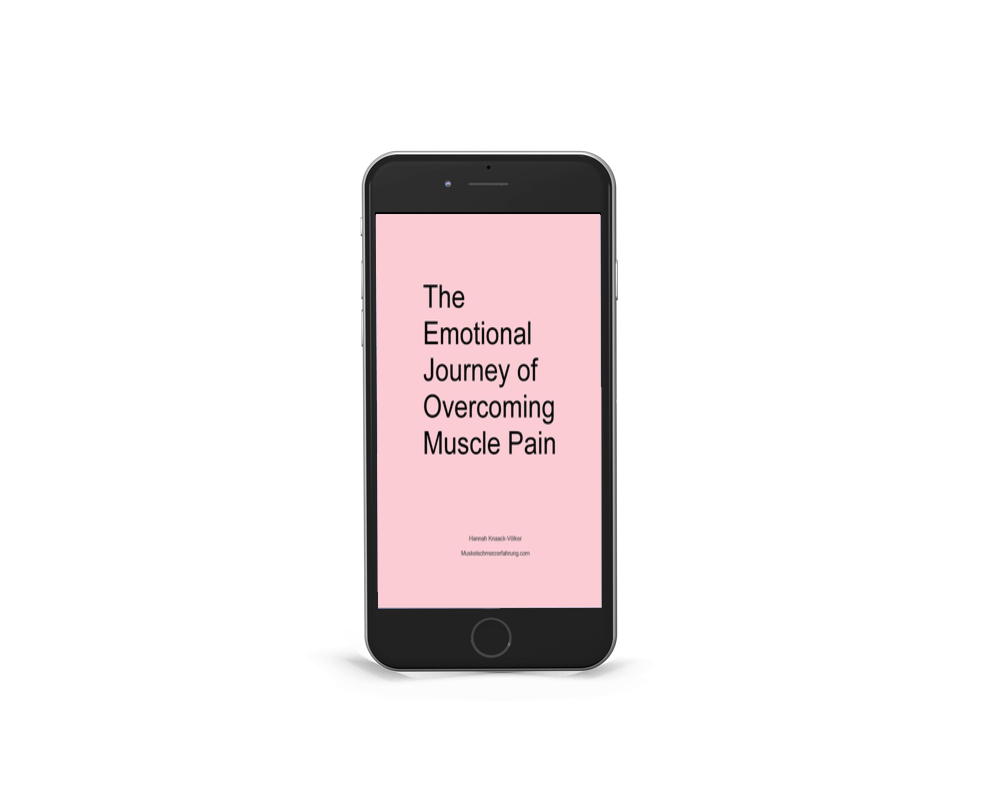 Mein Ebook The Emotional Journey of Overcoming Muscle Pain.
Mein Ebook The Emotional Journey of Overcoming Muscle Pain.


